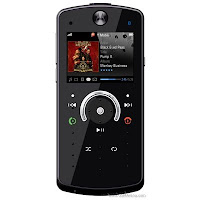Company : Gum India Ltd
Brand Analysis Count : 335
Big Fun was one of the hottest selling chewing gums during the Eighties. The brand evokes lot of nostalgia in me and reminds  me of the countless fights that I had with my parents to buy this brand.
me of the countless fights that I had with my parents to buy this brand.
Big Fun was launched in 1985. At that time the bubblegum market was at the nascent stage. It was this brand which initially created the bubblegum market in India.
Big Fun was also one of the first brands in confectioneries to focus on sales promotion as the core promotional strategy . The brand initially started by offering the pictures of Disney characters to induce the kids . The brand was also harping on the BIG bubbles that can be made with it.
But the real tipping point came with the 1987 Cricket world cup. Big Fun ran a highly successful campaign focusing on cricket. The brand offered a series of collectible pictures of cricketing stars along with the bubblegum wrapper.
Along with the pictures, there was also runs/wickets which the kids would collect and keep score. At the end of the sales promotion, the kids can exchange the scores with some gifts like comics and goodies.
 me of the countless fights that I had with my parents to buy this brand.
me of the countless fights that I had with my parents to buy this brand.Big Fun was launched in 1985. At that time the bubblegum market was at the nascent stage. It was this brand which initially created the bubblegum market in India.
Big Fun was also one of the first brands in confectioneries to focus on sales promotion as the core promotional strategy . The brand initially started by offering the pictures of Disney characters to induce the kids . The brand was also harping on the BIG bubbles that can be made with it.
But the real tipping point came with the 1987 Cricket world cup. Big Fun ran a highly successful campaign focusing on cricket. The brand offered a series of collectible pictures of cricketing stars along with the bubblegum wrapper.
Along with the pictures, there was also runs/wickets which the kids would collect and keep score. At the end of the sales promotion, the kids can exchange the scores with some gifts like comics and goodies.
The scheme was a super-hit. More than the goodies, kids started collecting these pictures for the love of cricket. Favorite star's pictures was traded and kids began to buy the product for the pictures ra
 ther than the bubblegum.
ther than the bubblegum.Those were the days of Kapil, Viv Richards, Holding, Gavaskar, Vengsarkar, Shastri .
Bubblegum during those times was not as sophisticated as today's. Big Fun was hard rectangular shaped with a syrupy taste. One has to do a lot of chewing to make it mellow and also to make the first bubble.
Picture courtesy : Kadalamittai.blogspot.com
I also happen to see the old ad of Big Fun from the blog of Soumya Dip : Cutting The Chai.

The brand was cashing in on the cricket fever during those times. But in the early nineties the brand died . I am clueless on the reasons behind the death of such a highly popular brand. There is a possibility that the company ran into financial trouble and together with the decline of the popularity of the entire bubblegum category may have caused the death of Big Fun. The product also was not tasty enough to sustain the brand once the sales promotions' effect is gone.
I was now wondering why companies were not running such promotions during IPL. If a brand has done similar promotion during this era , will it create the same magic that Big Fun has created 20 years back ?
Big Fun is yet another brand that has faded from the memory of consumers. Another sad story of a home grown brand biting the dust.






